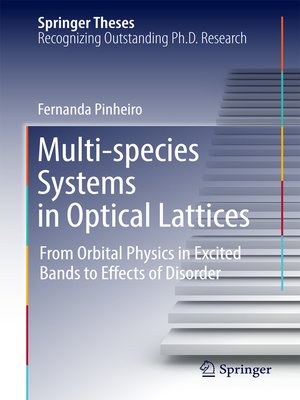Multi-species Systems in Optical Lattices
ebook ∣ From Orbital Physics in Excited Bands to Effects of Disorder · Springer Theses
By Fernanda Pinheiro

Sign up to save your library
With an OverDrive account, you can save your favorite libraries for at-a-glance information about availability. Find out more about OverDrive accounts.
Find this title in Libby, the library reading app by OverDrive.



Search for a digital library with this title
Title found at these libraries:
| Library Name | Distance |
|---|---|
| Loading... |
This highly interdisciplinary thesis covers a wide range of topics relating to the interface of cold atoms, quantum simulation, quantum magnetism and disorder. With a self-contained presentation, it provides a broad overview of the rapidly evolving area of cold atoms and is of interest to both undergraduates and researchers working in the field.
Starting with a general introduction to the physics of cold atoms and optical lattices, it extends the theory to that of systems with different multispecies atoms. It advances the theory of many-body quantum systems in excited bands (of optical lattices) through an extensive study of the properties of both the mean-field and strongly correlated regimes. Particular emphasis is given to the context of quantum simulation, where as shown here, the orbital degree of freedom in excited bands allows the study of exotic models of magnetism not easily achievable with the previous alternative systems. In addition, it proposes a new model Hamiltonian that serves as a quantum simulator of various disordered systems in different symmetry classes that can easily be reproduced experimentally. This is of great interest, especially for the study of disorder in 2D quantum systems.
Starting with a general introduction to the physics of cold atoms and optical lattices, it extends the theory to that of systems with different multispecies atoms. It advances the theory of many-body quantum systems in excited bands (of optical lattices) through an extensive study of the properties of both the mean-field and strongly correlated regimes. Particular emphasis is given to the context of quantum simulation, where as shown here, the orbital degree of freedom in excited bands allows the study of exotic models of magnetism not easily achievable with the previous alternative systems. In addition, it proposes a new model Hamiltonian that serves as a quantum simulator of various disordered systems in different symmetry classes that can easily be reproduced experimentally. This is of great interest, especially for the study of disorder in 2D quantum systems.







